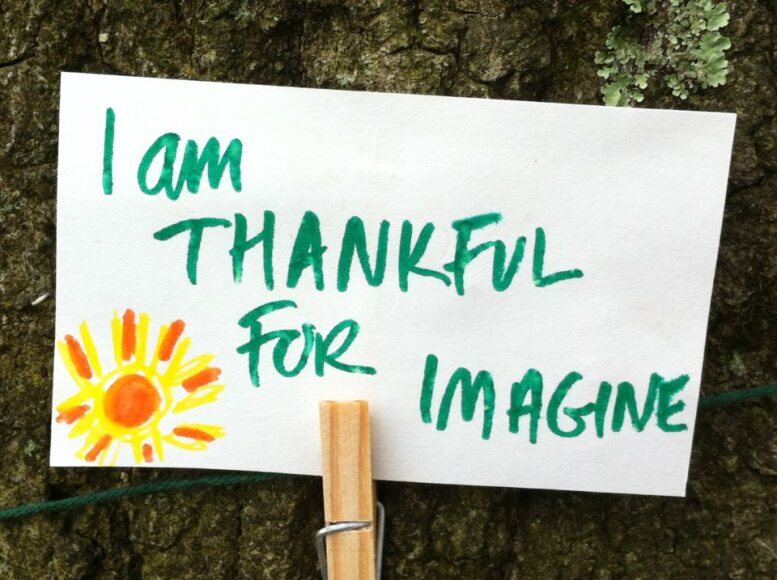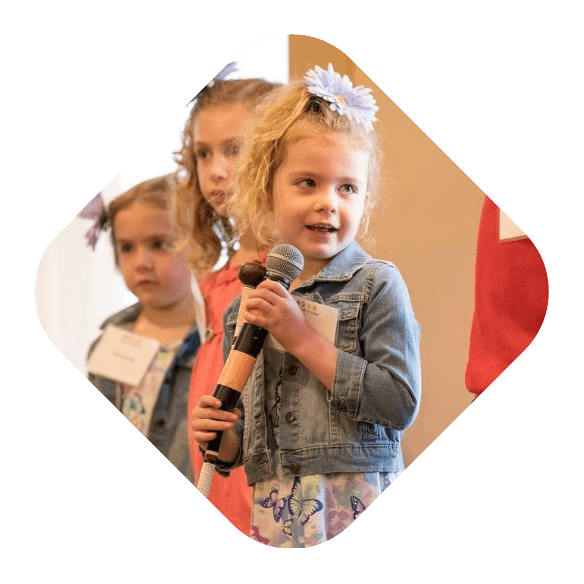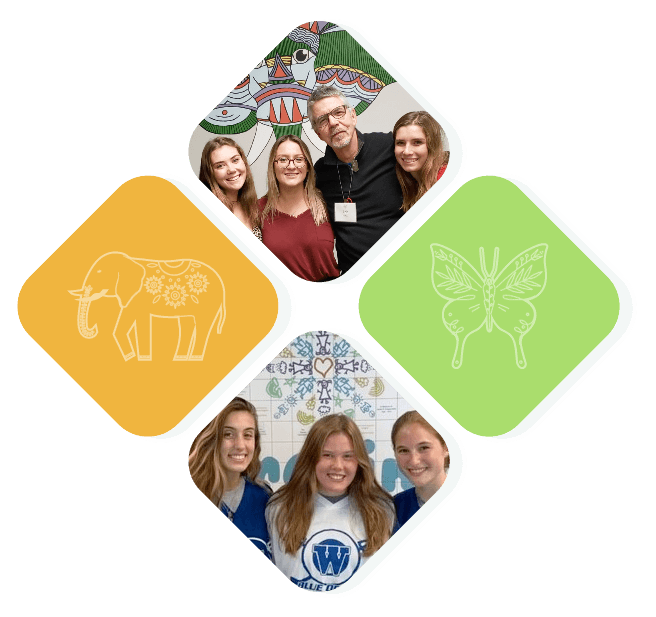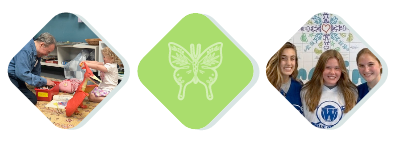
Imagine provides free, peer support groups for children and their families coping with a loss due to death. Our mission is to ensure no child grieves alone. We recognize not every child will be able to walk through our centers, which is why our Training and Education Program is so essential.
Imagine’s Training and Education Program provides schools and organizations with the tools and knowledge needed to better support children who experience any type of loss. The same skills and information can be used for adults to support one another. By providing trainings within schools and organizations, Imagine is creating grief informed communities. This takes our vision from no child grieves alone, to no one grieves alone. Together, we can ensure we are better equipped to be supportive of one another with any loss that we will experience throughout life.


Grief is the elephant in the room. It comes everywhere with us whether we like it or not. It shows up at school for students and workplaces for grieving adults.
Learn more about ways to help ensure these spaces are receptive and supportive for all those in need.


At Imagine, we are committed to creating communities where those who are grieving can find compassionate and supportive companions wherever they go. Imagine provides training and education to various stakeholder groups within the school community, and it is tailored to their specific role: leadership, mental health support team, teachers, parents/guardians, and students.
Imagine is committed to creating communities where those who are grieving can find compassionate and supportive companions wherever they go.
We all deal with many different types of loss: death, mental and physical illness, divorce, domestic violence, addiction, foster care, incarceration, etc.
Imagine partners with organizations to provide the skills needed to best support fellow team members and clients who are grieving any type of loss. When people who are grieving receive support, they learn to cope with their loss and develop resilience to cope with future losses.


“I turned to Imagine after one small department lost two coworkers within one month’s time. They provided onsite grief support for the team and others across the company. I am grateful for the impact they have with our workforce and the communities we serve.”
To find out the best type of training and education for your needs, fill out the Training & Education Interest Form or contact us at 908-264-3100 to learn more.


Join our free grief-informed community workshop webinars throughout the year!




Cras mattis consectetur purus sit amet fermentum. Nulla vitae elit libero, a pharetra augue. Cum sociis natoque penatibus et magnis dis parturient montes, nascetur ridiculus mus.
Take our quiz below and determine if the most popular grief myths are true or false.
“Students and educators manage so many types of grief in any given year and the Imagine training provides the foundation for understanding grief and for creating the time and space to talk about it in ways that strengthen the overall resilience of the community. My school partnered with Imagine to become a grief-informed community. Their amazing facilitators worked with our administrative team, faculty, students and parents to help us understand that school communities need this kind of training and conversation in an on-going way.”
"Imagine, A Center for Coping with Loss came to our event and provided training for participants that truly struck a chord with those who attended. The training was insightful, honest and candid in the manner in which it addressed, discussed and engaged participants. I was anticipating, given the topic, I would leave feeling downhearted. Instead, I felt at ease, and like there was an understanding amongst the participants. My domino piece still sits on my dresser as a reminder of the training."
"The Point Pleasant Borough School District was fortunate enough to partner with Imagine to provide our School Counselors and Child Study Team with the necessary tools to assist our students and school community when experiencing grief. Veronica kindly accommodated our training needs to ensure the staff members' needs and questions were answered. Imagine created a safe space during the training to reflect, share, and learn from one another."
"The training provided by Imagine was a powerful learning experience. Our goal was to educate professionals on the many and complex facets of grief, and Imagine did just that through this training. The presenters explained the concepts in relatable ways, and utilized examples and object lessons that were moving. The session was engaging, enlightening, and practical for individuals in every setting. Everyone who attended walked away better equipped to engage with the topic of grief."
“We truly cannot say enough about the incredible experience our school social work team had during the Grief/Loss Specialist trainings with Imagine. Veronica and Angela created a safe environment for our team to not only learn how to support grievers, but also reflect on our own experiences and understanding of grief and loss. The information, exercises, and opportunities to share and learn from one another helped elevate our work inside our school buildings and beyond. We are on our way to becoming a grief informed school district because of Imagine and look forward to this continued partnership in service of our school community!”
"Imagine provided a thorough overview and deep dive into the world of grief, providing us with tools, terms, and frameworks to think about grief in different ways in the work we do in prisons and in the community in the aftermath of violence. Their facilitators were well-prepared, thoughtful, and heartfelt guides in a place that's not necessarily comfortable to explore. I'm grateful for the work they do!"